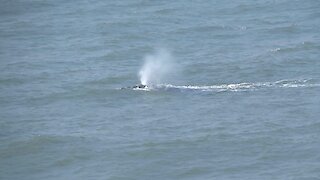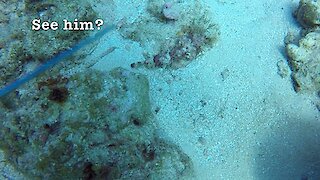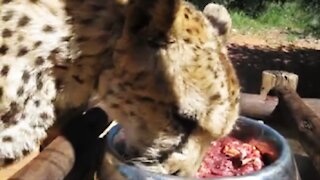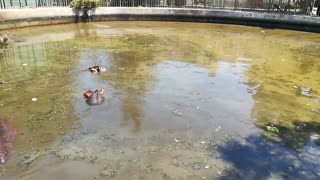Diver's incredible encounter with humpback whale and her newborn calf
Every year, humpback whales migrate from oceans around the world to congregate in Tonga to breed and give birth to their calves. The conditions are perfect and the waters around Tonga are free from predators such as killer whales and great white sharks that would prey on a vulnerable whale calf.
Humpback whales are one of the most magnificent and awe inspiring creatures on the planet. They are enormous and powerful, graceful and gentle and people have been mystified and fascinated by them for centuries. Whales are the biggest creatures to live, ever. They are more massive than even the largest dinosaurs that roamed the planet hundreds of millions of years ago. Unbelievably, whales have evolved from dog-like creatures that were land animals approximately 50 million years ago. They were only the size of a large dog and they looked nothing like the ocean dwelling whales that we see today. They ventured into the shallow waters and swamps and their bodies began to rapidly change shape as they adapted to this new way of life. Their bones began to flatten and evolve into fins and a large, flat tail to propel their bodies through the water.
The most remarkable part of this transformation is the relatively short time that it took whales to drastically increase in size. They feed in enormous quantities and grow rapidly during their early years, packing on blubber in such huge amounts that they are able to travel huge distances and survive for many months without feeding.
Unlike their toothed cousins, these humpback whales are filter feeders, engulfing huge schools of krill and small fish in lunge gulps that can take in enough water to fill a large living room. The filter the water through the baleen combs in their throats, expelling the water in a process that can approximately one minute. They feed in the colder waters around the arctic where krill congregate in dense schools, making feeding more efficient. They then migrate to warmer waters in Tonga, as this mother has, to bear their young. This protective mother has given birth to this calf only a few days before. Her baby will stay close and will nurse several times a day. After nudging his mother, her nipples will stick out prominently and he will be able to position his mouth around them. Since whales don't have lips, suckling is difficult and the milk is actually injected into his open mouth.
In the early days, the whale baby will spend most of his time near his mother's head, ready for her to lift him out of the water and shield him from harm. As he grows, he will roam farther away from her and will even frolic at the surface while she descends lower to nap in between breaths of air. But his mother will always be only a few tail strokes awy and ready to intervene if she perceives a threat of any kind.
Humpbacks, orcas and dolphins are all part of the whale family.One of the most important things to know about whales is that their intelligence is not far behind our own. As little as 100,000 years ago, certain whale species were the most intelligent creatures on earth, surpassing even our own ancestors for intellectual capability
-
 0:49
0:49
WildCreatures
4 years ago $0.80 earnedHumpback Whale Closely Approaches Swimmer For A Belly Rub
23.9K2 -
 0:36
0:36
WildCreatures
4 years ago $0.31 earnedLongjawed Mackerel Try Tasting Very Large Jellyfish
9.03K3 -
 0:54
0:54
NataliaCara
4 years agoFirst Right Whales of the season show up a month late
2.75K -
 4:03
4:03
Top_10_by_Ange27
4 years ago $0.02 earnedTop 10 - The most beautiful fish
636K3 -
 0:30
0:30
cdngreenwaterdiver
4 years ago $0.01 earnedMost poisonous fish has amazing camouflage abilities
5.32K5 -
 1:07
1:07
EmotionsofAfrica
4 years ago $30.84 earnedWild dog mother calls her puppies for long-awaited playtime session
13.8K8 -
 0:11
0:11
videostoones
4 years agoLittle Boy Stunned By Amazing Baby Crocodile
22 -
 0:18
0:18
NataliaCara
4 years agoOld rescued cheetah having lunch
188 -
 0:21
0:21
Ellewatonmio
4 years agoUnclear Lake Hides Family Of Hippos
1 -
 18:16
18:16
Kernailmaster
4 years agoInsane Cage Dive Around Hungry Sharks , Once In Life Experience
1